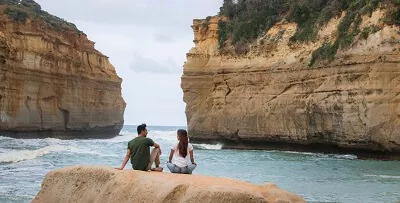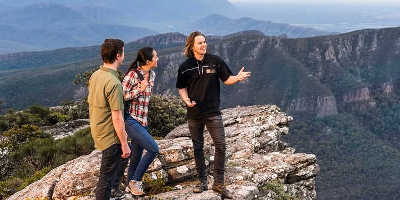
Why is it called the Shipwreck Coast?
Written by: Cameron Ward
Published: 05/05/2020
Reading time: 3 mins
This dangerous stretch of coastline has an infamous history of sending ships to a watery grave.
Located on the Great Ocean Road, the Shipwreck Coast covers 130 kilometres of coastline from Port Fairy to Cape Otway and includes the famous 12 Apostles. The dangerous waters of the Southern Ocean were an important shipping route for trade and transport, but many boats ran into trouble in the rough seas, earning it the ominous name the Shipwreck Coast.
Even famous explorer Matthew Flinders was afraid of the Shipwreck Coast, once describing it as one of the most fearful sections of coastline he had ever seen. There are close to 700 shipwrecks beneath the waters along this stretch of coastline, though only 240 have been discovered.
Spend some time gazing out to the Southern Ocean during rough weather and you will have no trouble imagining how so many ships met their fate at the bottom of the sea. The water can look tranquil and inviting on a calm sunny day, but often a strong wind whips the waters into a huge swell that pounds the high cliffs and submerged rocks, turning the peaceful waters into something that closely resembles the inside of a washing machine. Dangerous weather conditions are thought to be to blame for most of the wrecks along the coast, with human error also playing a part in many.
Most of the wrecks from the 1700s and 1800s were transporting passengers or shipping cargo for trade. Following a series shipwrecks in the area, lighthouses were established along the coast in the mid-1800s that still operate today including at Port Fairy, Aireys Inlet, Portland and Cape Nelson.
Where can you see shipwrecks?
Remnants and wrecks of ill-fated ships can be spotted along the Shipwreck Coast or explored by keen divers. Most wrecks can be reached for diving via a chartered boat and should only be attempted in good conditions.
-
Wreck Beach
lying on the reef of the aptly named Wreck Beach are two permanent reminders of the danger of the treacherous waters of the Southern Ocean. Two anchors, one from Marie Gabrielle, which sunk in 1869, and Fiji, sunk a in 1891, can be reached at low tide by descending the 350 steps to the beach. The wreck of Fiji sits six metres under the water which can be explored diving.
-
SS Casino
400 metres off the shore of Apollo Bay, the SS Casino, which sunk in 1932 while trying to dock in stormy weather, lies about nine metres below the surface and can be reached by diving.
-
Loch Ard
Probably one of the most well-known wrecks in the area is that of the Loch Ard. It was made famous after two survivors, Tom Pearce and Eva Carmichael, washed ashore to the safety of a beach. The beach where they spent the night, close the 12 Apostles, is now known as Loch Ard Gorge. You can charter a boat from Port Campbell to dive the Loch Ard to examine the ship’s cargo, bottles, crockery and tiles.
Related article: What are the stories of the Shipwreck Coast?









